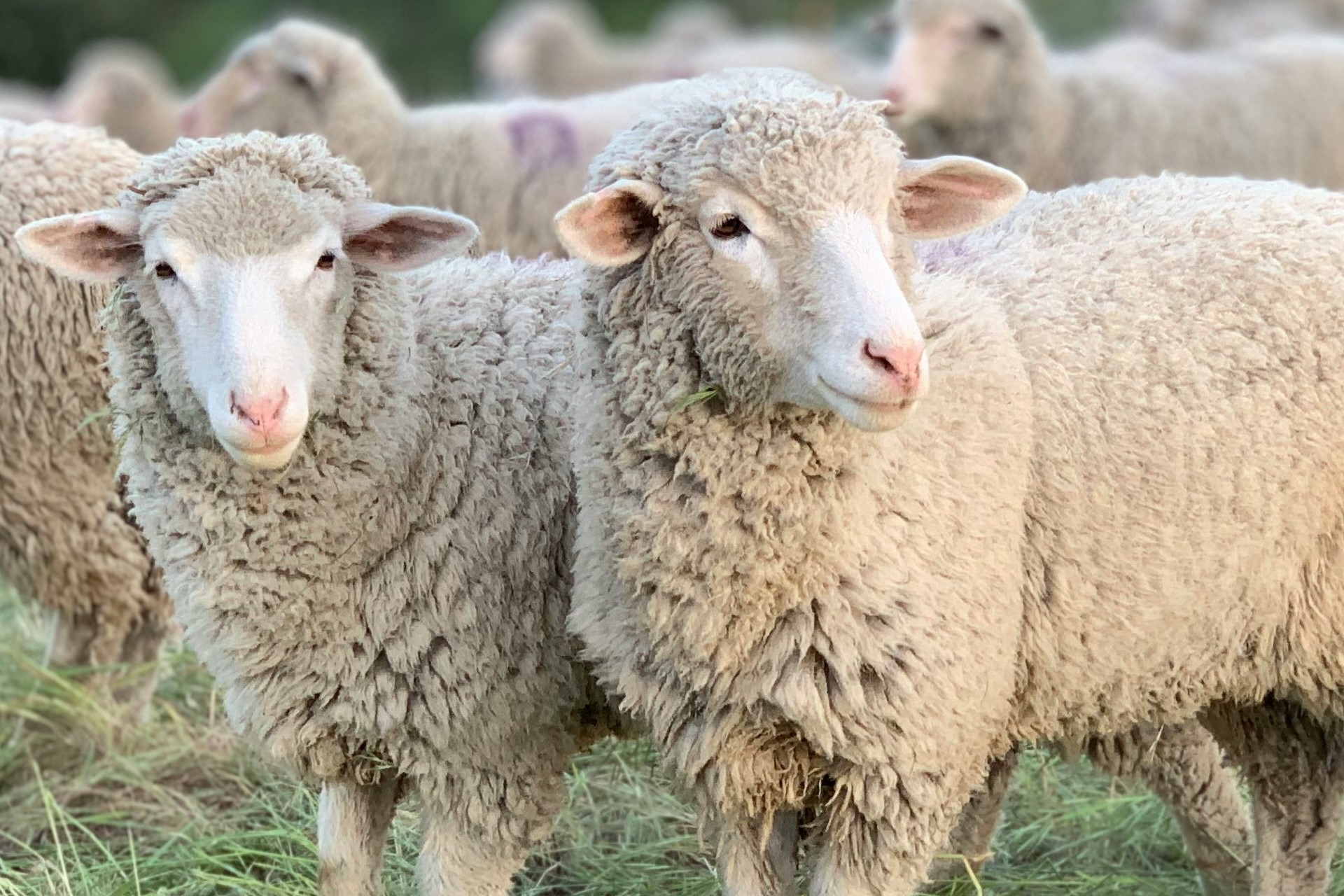
Raising Sheep for Beginners: A Comprehensive Care Guide
We are reader-supported. When you buy through links on our site, we may earn affiliate commission.
Raising sheep for beginners is exciting. Whether you’re a hobbyist or dreaming of becoming a farmer, you can start a healthy and happy sheep farm as long as you cover the basics.
Getting Started
To start sheep farming, you’ll need sturdy fences to keep them safe, simple shelters for weather protection and a reliable water supply. Install feeders to control their diet and set up handling facilities with chutes for shearing and health checks.
Equip yourself with shearing tools for wool maintenance and stock up on health care supplies. If breeding is in the plan, consider tools like ram harnesses. And, of course, make sure you have ample storage for feed and hay and if your flock grows, a means of transportation for vet visits or market trips like a trailer may come in handy.
Benefits of Raising Sheep for Beginners
There are a lot of benefits to raising sheep in sustainable farming. They are:
- Efficient grass-to-protein conversion: They are nature’s protein converters, efficiently turning ordinary grass into valuable protein.
- Reduced water usage: Worried about water? Sheep use less water compared to other animals. They drink 35.2% less H2O, contributing to a more sustainable and mindful use of this precious resource.
- Positive landscape management: Think of sheep as your friendly landscapers. They roam, they graze and in doing so, they help manage the land naturally. It’s like having a furry, four-legged landscaping team on duty.
- Renewable wool: They provide renewable, soft wool. Raising sheep for beginners contributes to a sustainable diet and eco-friendly fiber production.
Choosing the Right Sheep
Pick the perfect sheep for your farm by considering your goals and the local environment. Each breed has unique qualities that suit different purposes.
Check if the climate and terrain match the breed’s preferences. Also, consider how much time and care you can provide, as some breeds need more attention.
Caring for the Sheep
Meeting your sheep’s basic needs ensures your flock thrives and stays content. Make sure to schedule regular vet check-ups to monitor their health.
Provide a balanced diet of quality nutrients and always keep clean water available for hydration and proper digestion. Ensure your flock has a comfy and secure shelter. Regularly rotate pastures to prevent overgrazing while staying vigilant for any signs of illness or lameness.
Don’t forget to manage parasites effectively by deworming regularly. Trim hooves routinely — ideally one to two times a year to prevent lameness issues and follow good breeding practices for healthy offspring and maternal care. Keep your records in order by documenting vaccinations, treatments and health issues.
Sheep Health 101
Raising sheep for beginners requires basic first-aid knowledge. Here are some common diseases, prevention and treatment for your flock:
- Footrot: Contagious bacterial infection affecting the hooves, often caused by prolonged exposure to wet and muddy conditions. Keep things dry and tidy and give their hooves a regular trim. A dose of antibiotics and some TLC for their hooves do the trick.
- Internal parasites: These are also called worms and are commonly acquired through contaminated pasture and water sources. They affect the digestive system. Deworm your flock regularly and change up their grazing spots. Anthelmintic medications are the secret weapon here.
- Pneumonia: An inflammation of the lungs often caused by stress, poor ventilation or exposure to respiratory pathogens. Make sure there’s enough air circulating and keep stress levels low. Antibiotics and some extra care will have them back on their feet.
- Scrapie: Fatal neurodegenerative disease transmitted through contact with infected tissues. There is no cure but you can focus on prevention by checking genes.
- Enterotoxemia: Also called overeating disease. It occurs when sheep eat excessive grain, leading to harmful bacteria overgrowth. It can be treated with antitoxin and support.
- Orf: Contagious ecthyma is usually transmitted through direct contact with infected lesions. You can isolate infected sheep and, consider a vaccine and use tropical treatments.
Breeding and Reproduction
Sheep reproduction involves a cycle called estrous, lasting about 17 days and during the 24 to 36 hours of “heat” in this cycle, female sheep or ewes are receptive to mating.
The breeding season is influenced by factors like day length and environmental conditions, with some breeds having a seasonal cycle. Male sheep or rams, play a vital role during this time, being the most fertile.
After successful mating, ewes undergo a gestation period of 145 to 155 days, leading to lambing. This birthing process, influenced by nutrition and genetics, is crucial for managing a healthy and productive flock. Ewes then have a postpartum period, requiring proper care and monitoring for both the ewe and lamb’s well-being.
Lambing Management and Newborn Care
Here are steps you can follow to contribute to a successful lambing season and ensure the health and vitality of your newborn lambs:
- Prepare lambing area: Create a clean and sheltered area with adequate bedding for a comfortable birthing environment.
- Monitor ewes: Regularly observe pregnant ewes for signs of labor, providing assistance if needed and ensuring safe delivery.
- Assist with difficult births: Be prepared to assist ewes during challenging births, ensuring both the ewe and lamb’s well-being.
- Provide postpartum care: Immediately attend to the newborn lamb, ensuring it breathes and cleans the nose and mouth if necessary.
- Naval dipping: Dip the lamb’s naval cord in an iodine solution to prevent infection.
- Ensure colostrum intake: Ensure lambs receive colostrum from their mothers within the first few hours for essential nutrients and antibodies.
- Monitor bonding: Observe and encourage bonding between ewe and lamb, as a strong maternal bond is essential for the lamb’s well-being.
- Tagging and record keeping: Tag lambs for identification and maintain accurate records of lambing dates, weights and interventions.
- Provide warmth: Keep newborn lambs warm — especially in colder weather — using heat lamps or by providing shelter.
- Health checks: Regularly conduct health checks on ewes and lambs, addressing any issues promptly.
Raising Sheep for Beginners
Whether you’re raising sheep for a hobby or considering a future in farming, enjoy the experiences ahead. Keep learning, seek advice and adapt as needed. Always prioritize your flock’s well-being, offering them care and attention to have healthy lambs, happy ewes and a thriving farm.
Share on
Like what you read? Join other Environment.co readers!
Get the latest updates on our planet by subscribing to the Environment.co newsletter!
About the author
Jane Marsh
Starting from an early age, Jane Marsh loved all animals and became a budding environmentalist. Now, Jane works as the Editor-in-Chief of Environment.co where she covers topics related to climate policy, renewable energy, the food industry, and more.





